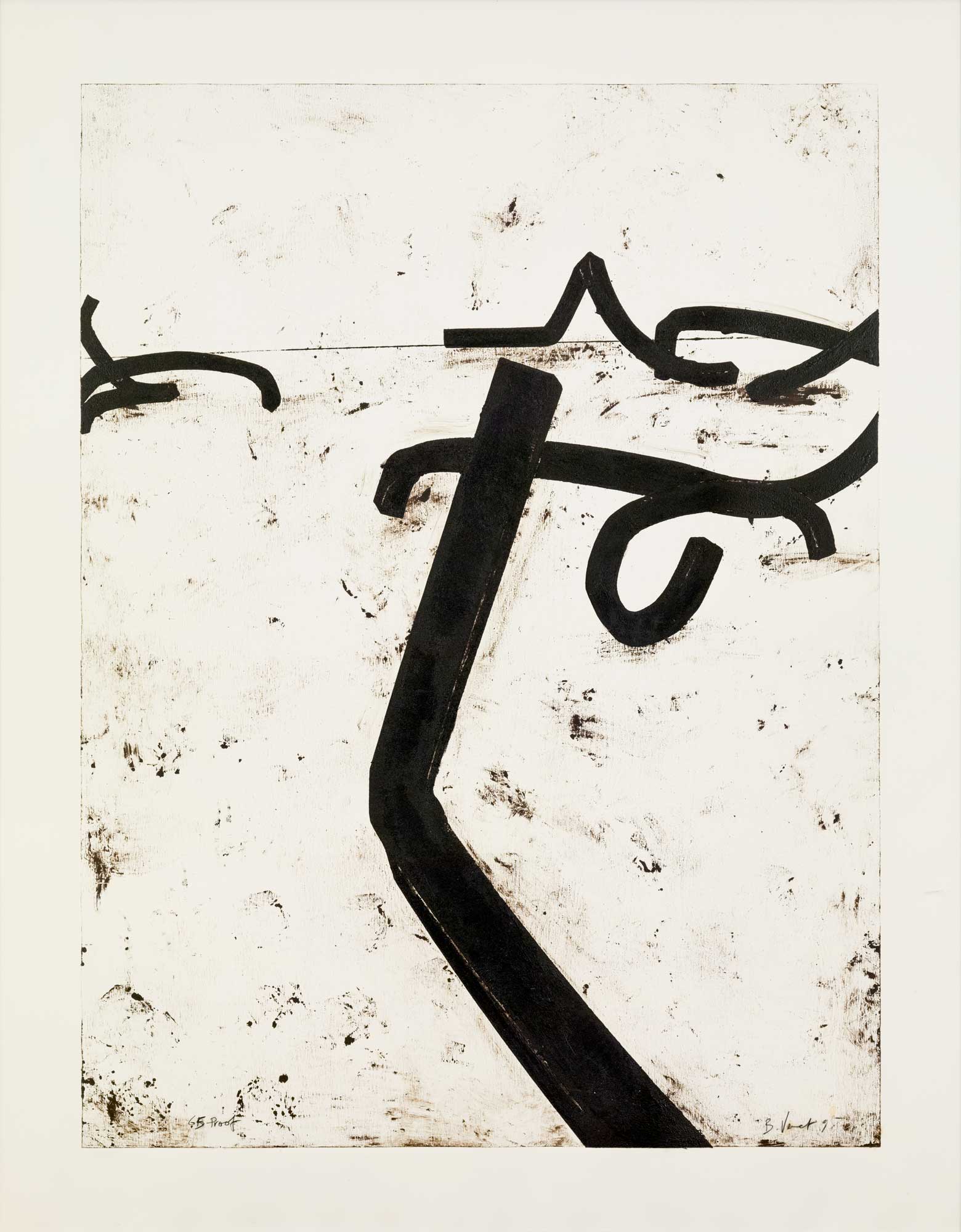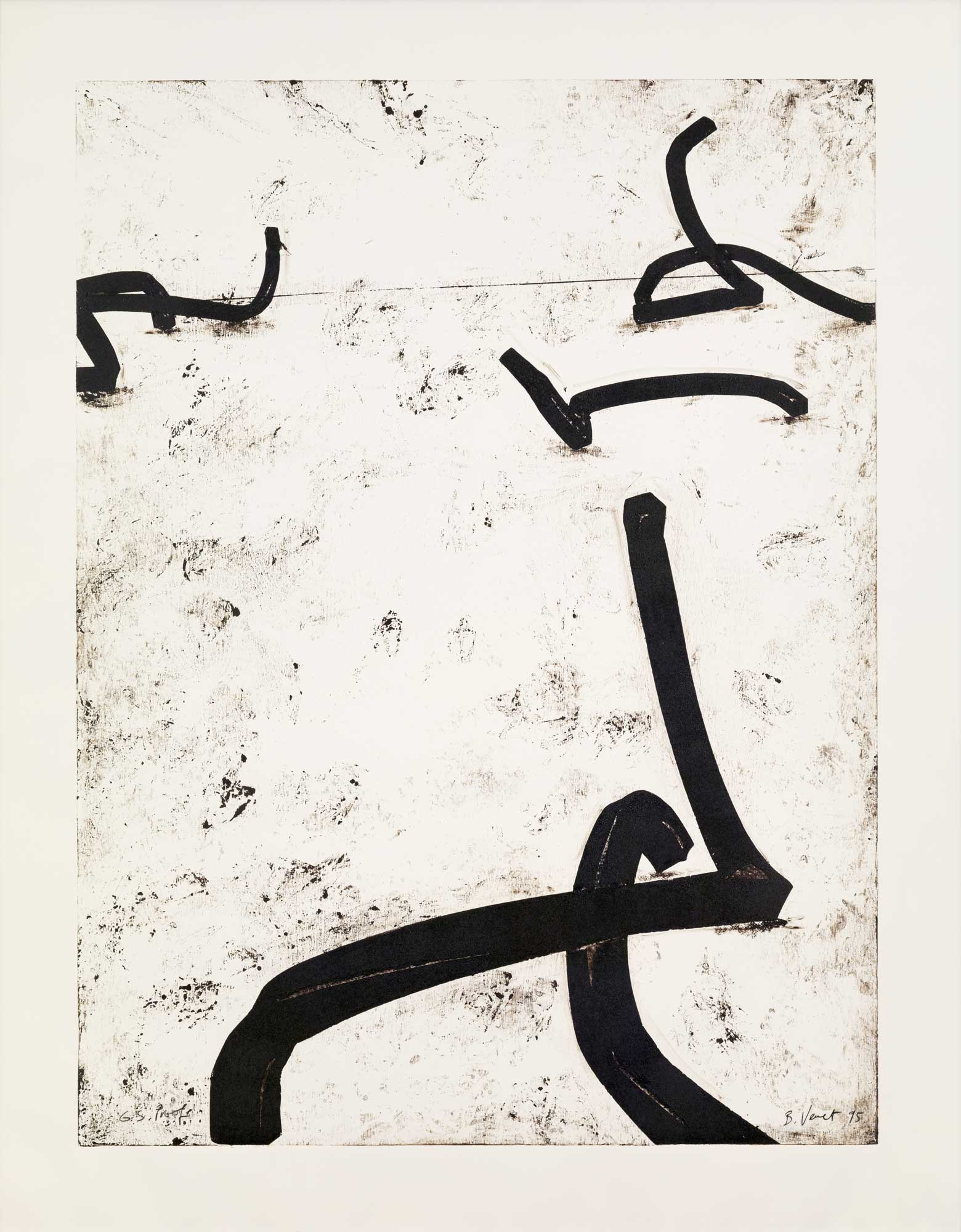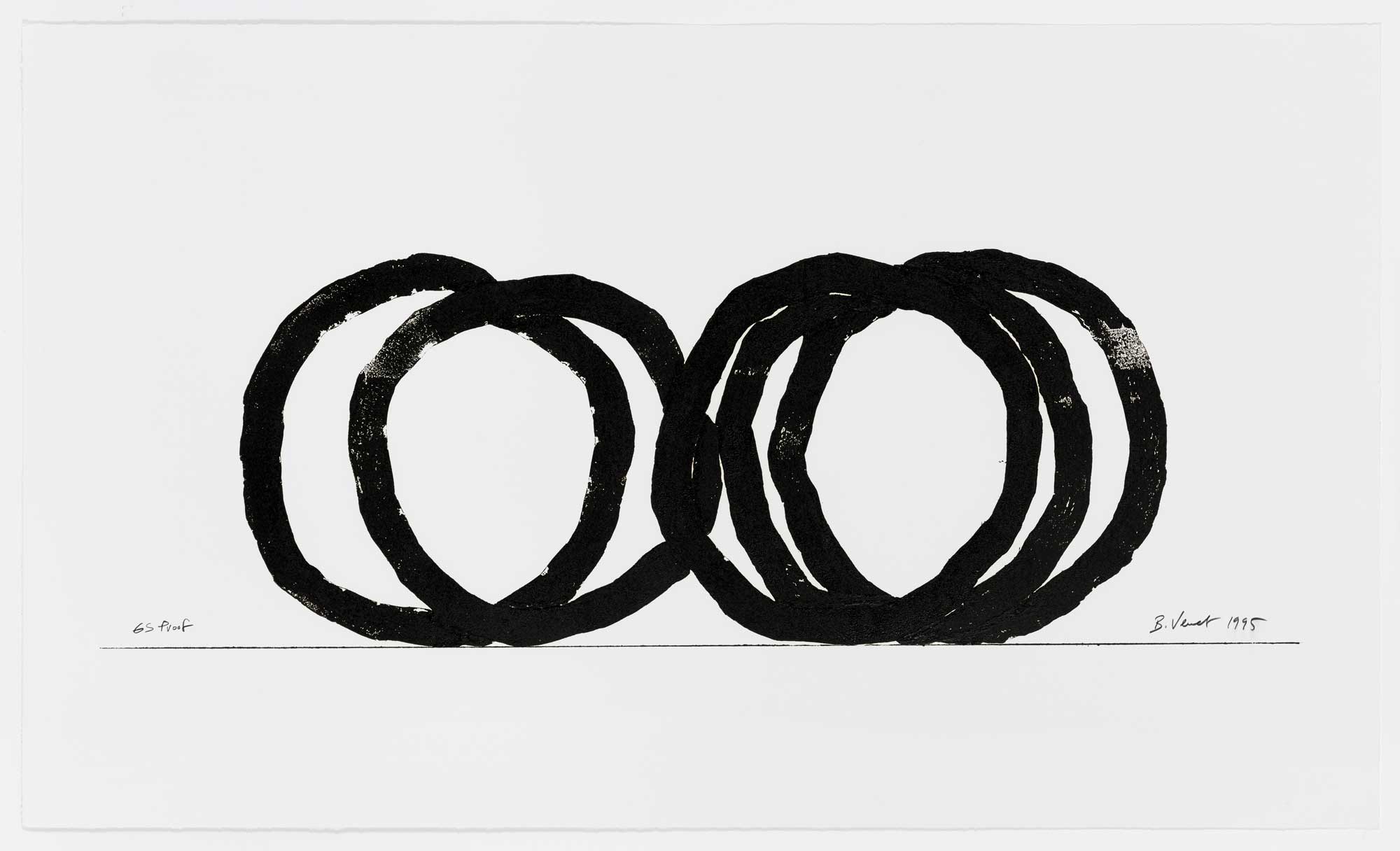
Bernar Venet
Random Combination of Indeterminate Lines
1996
Drypoint etching
22-7/16 x 17-1/16 inches
Edition: 40
No Longer Available

Bernar Venet
Random Combination of Indeterminate Lines (A)
1995
Relief and woodblock monoprint in tar with hand painting
76 x 60-1/4 inches
Edition: 12
No Longer Available

Bernar Venet
Random Combination of Indeterminate Lines (B)
1995
Relief and woodblock monoprint in tar with hand painting
76 x 60-1/4 inches
Edition: 12
No Longer Available
Bernar Venet
Bernar Venet (b. 1941), a French conceptualist artist and minimalist sculptor, claims the freedom to use any theme and media he wishes within a limited range of color, form and material. He is concerned with making art that has no reference in the world outside itself, and with finding ways to make images without traditional compositional values. His art is highly innovative, often based on mathematical models, and using industrial materials.
Random Combination of Indeterminate Lines (A), Random Combination of Indeterminate Lines (B)
Bernar Venet is fond of descending to the factory floor to wrestle huge pieces of steel into abstract shapes, then arranging the shapes into complex, equally abstract compositions. His large prints Random Combination of Indeterminate Lines (A) and (B) were created at Graphicstudio using a steamroller and the road instead of a press, and tar instead of ink. To accomplish these prints, a sheet of plywood with a 64 x 48 inch rectangle cut out was bolted to the concrete roadbed. The wooden rectangle became the printing plate, which had drawn upon it the locations of the prints' principal elements, bold black lines and shapes.
For the first run, the background, Venet hand-applied, with staccato movements, cold roofing tar to the printing plate. The paper was placed on the plate and the steamroller drove across it twice. This process yielded a sparse ground that is different for every print. The second run incorporated the bold black lines and shapes, which were cut out of flat aluminum sheets. Cold asphaltum and synthetic fibers were applied with a roller to the shapes, which were then placed in their correct locations on the plate. The steamroller again drove over the paper twice, transferring the asphaltum to the paper and creating a relief. After this second run, Venet hand applied a horizon line and added finishing touches to the prints.
FIVE INDETERMINATE LINES (SCULPTURE AND PRINT)
The sculpture Five Indeterminate Lines utilizes torch cut steel with a lush, patinated surface. The sculpture consists of five metal circles pinned together and welded to a metal base. The circles are cut out of a 7/8 inch mild steel plate by means of an oxy-acetylene cutting torch. This method produces a rough-cut edge, which is nonetheless faithful to Venet's sensitively drawn circle outlines.
Its companion piece, the relief tar print Five Indeterminate Lines was also printed using the steamroller method. A sheet of plywood with a 26 1/4 by 48 inch rectangle cut out was bolted to a concrete ground. A rectangular piece of plywood was used as the printing block, and the position of the five rings were marked on it. Five flat metal rings were cut out of aluminum sheeting, and cold roofing tar was applied with an ink roller to each. The rings were positioned on the plate, a sheet of Somerset Satin White 410gm paper placed over it, and the block was pressed twice by a steamroller. This process transferred the tar to the paper and created a relief impression at the same time.
RANDOM COMBINATION OF INDETERMINATE LINES
In this print, Venet uses drypoint to study the formal relationships initiated in a sculpture of the same title. Venet scraped the copper with a steel tool creating a burr that holds a rich layer of ink. A second aquatint plate compounds the density of the ink to an equivalence with the rough steel that is his usual medium.
Further Resources
Artist's Site: bernarvenet.com
Printmaking + Sculpture Terms
Sales
For sales, or more information about an edition, please contact Graphicstudio at (813) 974-3503 or gsoffice@usf.edu.
Copyright + Reproduction
Images of the artwork are jointly owned by the artist and Graphicstudio. Reproduction of any kind including electronic media must be expressly approved by Graphicstudio.

.jpg)